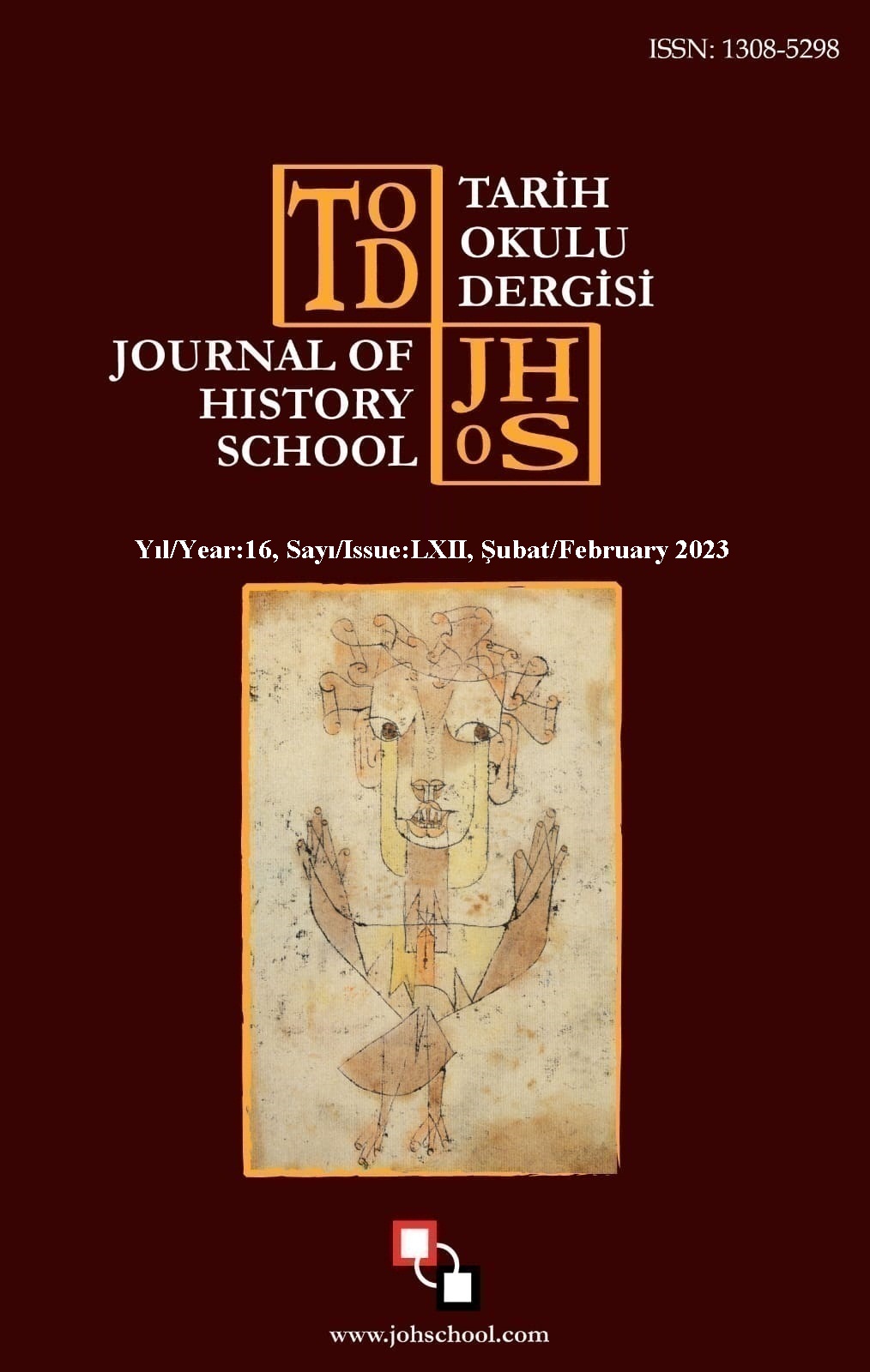Author :
Abstract
İnsan, tarih boyunca doğa ile mücadele halindedir. Bu mücadele zarfında amaçlarına ulaşmak için farklı arayışlara girmişlerdir. Korkularını yenmeyi ya da sahip olmayı arzuladıkları nesneyi elde etmenin yolu olarak attıkları ilk adım, onu tanımak olmuştur. Korktukları yırtıcı bir hayvanı ya da açlığını gidermek için avlamak istedikleri geyiği mağara duvarına realist ve natüralist bir yaklaşımla resmetmişlerdir. Bu resimlerin oluşumuna sebep olan bazen kendini ifade etme çabası bazen de çizdikleri figürün gücünü elde etme arzusu olmuştur. Ancak bu resimler sanat için değil büyü amaçlıdır. O resmi duvara çizdiren inançtır. Söylenceler eşliğinde yapılan ritüeller ile tekrarlanan bu ifadeler zaman içerisinde inanca dair sembollere dönüşmüşlerdir. Bu sembolleşme eğilimi zamanla hayatın her alanına yayılmış ve yaşamın vazgeçilmez bir parçası olmuştur. Semboller, anlatılmak istenenin tümünü vücudunda barındıran küçük yapı taşlarıdır. Ancak bu yapı taşları bazı sanatçılar tarafından hammadde olarak kullanılmak suretiyle günümüz resim sanatında tekrar ele alınarak, içlerinde var olan dinamikler korunarak güncel yapıtlara aktarılmıştır. Araştırma kapsamında yaşayan mit kaynaklı sembollerin tanımına, doğuşuna, gelişimine ve sanata girişinde ritüellerin etkisine dair literatür taramaları yapılmıştır. Kültür varlıklarımızda gizlenmiş mit kaynaklı sembolleri tuvallerine taşıyarak yenileyen ve yineleyen beş farklı sanatçıya ait eserlerin görsel incelemesi yapılmıştır. Ulaşılan bilgiler ve belgeler ışığında vücut bulan bu araştırma, mit, rit ve sembol ilişkisine ışık tutarken aynı zamanda sanat eseri kompozisyonlarının oluşumunda sembollerden faydalanma metotlarını örnekleyerek ortaya koyması açısından önem taşımaktadır. Sanat eseri okuma, mitoloji, görsel sanatlar gibi alanlarda bilime ve insanlığa katkı sunması amaç edinerek hazırlanan çalışmanın yeni araştırmalara kaynaklık edebileceği düşünülmektedir.
Keywords
Abstract
People has been in a struggle with nature throughout history. During this struggle, they searched for different ways to achieve their goals. The first step they took as a way of overcoming their fear or obtaining the object they desired was to know it. They depicted a predator they feared or a deer they wanted to hunt to satisfy their hunger on the cave wall with a realistic and naturalistic approach. The reason for the formation of these paintings was sometimes the effort of self-expression and sometimes the desire to obtain the power of the figure they drew. However, these pictures are for magic, not for art. It is faith that draws that picture on the wall. These expressions, which are repeated with rituals accompanied by myths, have turned into symbols of belief over time. This tendency to symbolize has spread to all areas of life over time and has become an indispensable part of life. Symbols are small building blocks that contain everything that is meant to be told. However, these building blocks have been reconsidered in today's painting art by using them as raw materials by some artists, and they have been transferred to contemporary works by preserving the dynamics existing in them. Within the scope of the research, literature reviews were conducted on the definition, birth, development and the effect of rituals on the entrance to art of living myth-based symbols. A visual examination of the works of five different artists, who renewed and repeated the myth-based symbols hidden in our cultural assets, on their canvases was made. This research, embodied in the light of the information and documents obtained, is important in terms of exemplifying the methods of making use of symbols in the formation of artwork compositions, while shedding light on the relationship between myth, rite and symbol. It is thought that the study, which is prepared with the aim of contributing to science and humanity in fields such as reading works of art, mythology, and visual arts, can be a source for new research.





